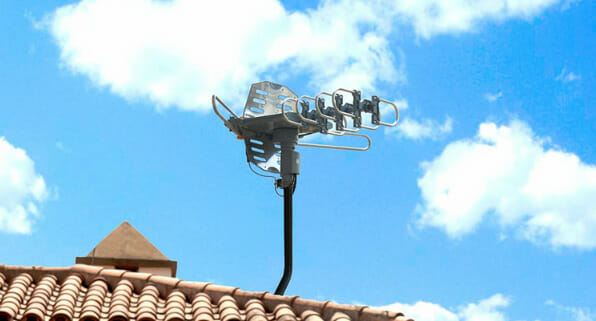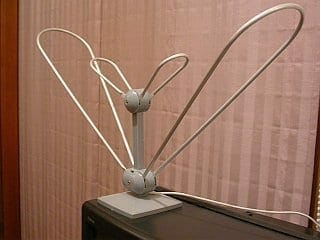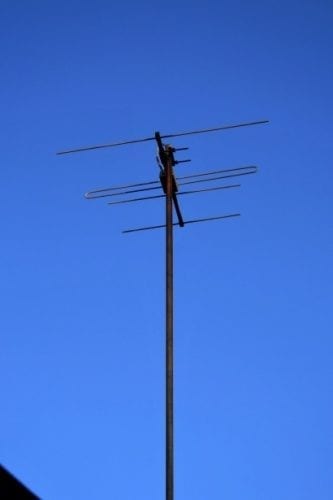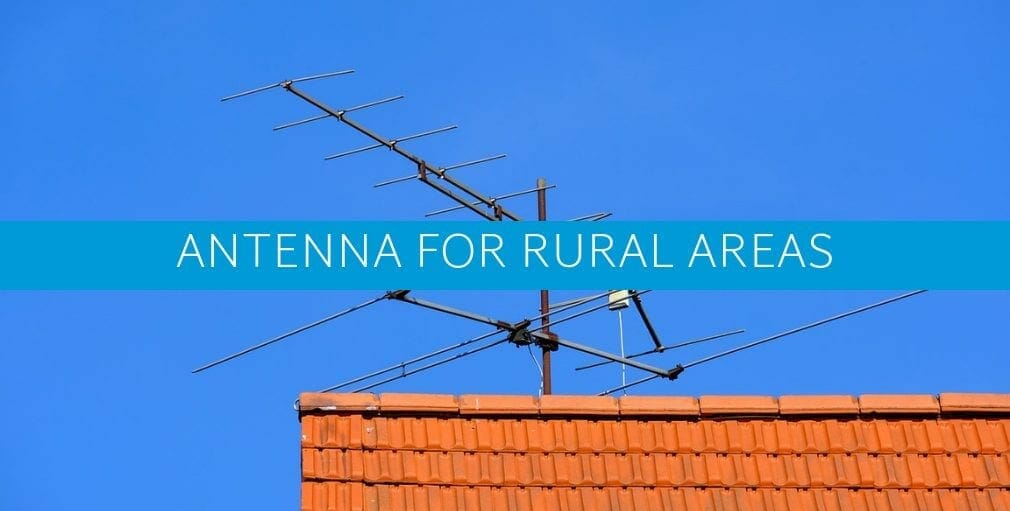Will a TV antenna work in rural areas? Or is it a waste of money?
The short answer is that a TV antenna will work in rural areas, but there’s a bit more to it.
In general, television antennas can receive signals from transmission towers located in rural areas, provided that the signal strength is strong enough and the antenna is properly installed and aimed. However, the performance of a television antenna can vary significantly depending on several factors, including the distance to the transmission tower, the terrain and landscape between the antenna and the tower, and the presence of any obstructions, such as trees, buildings, or other structures.

In rural areas where the signal strength may be weaker or more distant, it may be necessary to use a long-range antenna or an amplifier to boost the signal. It’s also important to properly aim the antenna in the direction of the transmission tower to ensure that you can receive the best possible signal.
Suppose you are unsure whether a television antenna will work in your location. In that case, you may want to consult with a professional antenna installer or use an online signal strength calculator to get an idea of the signal conditions in your area. This can help you determine which type of antenna is likely to be most effective for your needs.
Factors that Affect Signal Strength in Rural Areas
Several factors can impact the performance of a television antenna, including:
- Distance to the transmission tower: The distance between the antenna and the transmission tower can affect the strength of the signal, with weaker signals being more prone to interference and degradation.
- Terrain and landscape: Hills, valleys, and other types of terrain can interfere with the signal and make it more difficult for the antenna to pick up a strong, stable signal.
- Obstructions: Trees, buildings, and other structures can block or interfere with the signal, making it more difficult for the antenna to pick up a clear signal.
- Signal strength: The strength of the signal can vary depending on several factors, including the power of the transmission tower, the type of antenna being used, and the presence of any interference or obstructions.
- Antenna type: Different antennas are designed to pick up different signals; some are better suited to certain conditions than others. For example, a directional antenna may more effectively pick up a strong, stable signal from a distant transmission tower. In contrast, an omnidirectional antenna may be better suited to picking up weak, scattered signals.
- Antenna positioning: Properly aiming and positioning the antenna can ensure you receive the best possible signal.
- Weather conditions: Rain, snow, and other types of adverse weather can affect signal strength and make it more difficult for the antenna to pick up a stable signal.
Indoor vs. Outdoor Tv Antennas – Which Ones Work Better in Rural Areas?
When you first need to buy a TV antenna, you’ll be faced with choosing between an indoor and an outdoor one.
An indoor TV antenna is much simpler to set up – you have to plug it in and connect it to your TV set. Then, point it toward the broadcast tower, and you’re good to go.
However, with an outdoor TV antenna, you’ll need to assemble it, run cables through your house, and set it up on the roof for optimal performance. And every adjustment you’ll need to make should also be made on the roof.

This sounds simple, right? An indoor antenna is better. Well, no. With any antenna, the broadcast tower’s signal should be able to reach the antenna itself. With an outdoor antenna, you place it high on the rooftop, and you may even have a clear line of sight to the tower, depending on your surroundings.
On the other hand, with an indoor antenna, you have walls the signal needs to go through, and that’s the least of your issues. The signal is highly susceptible to interference from other wireless devices, so anything else in your room that’s wireless will negatively impact your signal.
Therefore, the conclusion is that an outdoor antenna is often the better choice. Fewer issues with signal interference and a much stronger signal result in a better viewing experience.
With that out of the way, let’s look at the different types of outdoor antenna
s and which one you should go for, depending on your specific situation.
What Kind of Outdoor Tv Antennas Work Best in Rural Areas?
Some popular options for outdoor TV antennas in rural areas include:
- Omnidirectional,
- Multidirectional, and
- Directional.
There isn’t a “best” type, all of them have advantages in certain situations, and all of them come with disadvantages.
Let’s start with omnidirectional antennas. As their name suggests, they can receive signals from all around them, a full 360 degrees. This makes them ideal for two scenarios: you’re either living in a densely populated area with a lot of towers, or you live in a rural area with many towers in multiple directions. An omnidirectional antenna doesn’t have a range that’s too strong, but it can pick up multiple signals, giving you a lot of channels, provided you have towers nearby.
Next, we have multidirectional antennas. They’re similar to directional ones but usually have a wider range coverage and can cover multiple directions simultaneously. If you live in a rural area with multiple towers, but they’re all in the same general direction, this might be the one to go for.
Their range is significantly better than an omnidirectional antenna, but it’s not as good as a directional antenna’s. However, if you know you have multiple towers nearby, all in the same general direction, chances are they’re close enough, and you don’t need all that much range.

Last but not least, we’ve got directional antennas. They’re the favorites of people living in rural areas where the broadcast towers are far away.
They do have quite a lot of range, often up to 150 miles, and even when bad weather does impact signal reception, you still have quite a bit to spare. The downside is that you must have them pointing in the exact direction of the broadcast tower for them to work well. This can be a demanding thing to set up, but you should be good to go once you’ve got it up and running.
If you have a single broadcast tower or two in the same line of sight, a directional antenna is the best one for you, even though it’s difficult to set up.
Wrapping things up
The answer to our initial question on whether a TV antenna will work in rural areas is yes. Still, different antennas will give you different performances.
Depending on your location, surroundings, and expectations, you can choose one of the types we discussed earlier. If your home can accommodate it, by all means, go for an outdoor antenna, and which one you go for depends on your specific situation with the broadcast towers.

